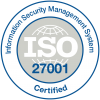Article summary
Did you find this summary helpful?
Thank you for your feedback!
Prerequisites
Here’s a quick checklist you need to focus on before you create an embedded app:
NOTE
Themes applied for the organization will now reflect in the Guest & Embed Apps.
Focus on the Workflow
- Once you navigate the workflow builder page in the app creation process, ensure that selecting roles in the start step is selected as “Any One.”
- By default, the role in the start step will be any user, and the app creator needs to change it to anyone to get access to the embedded app.
- Selecting anyone in the workflow start step will play a major part in the embedded app access.
- Selecting anyone tends to give access to end-users for both Quixy users and non-users.
Prerequisites before publishing the app
- Once your app creation is done, you will be on the app publish page, where you can also enable the embedded app feature for the app you just created.
- Those whose apps have selected this option on the app publish page will only get the option to copy the app link and share it with the end-users.
- Immediately after clicking on the “Enable Embed App” check box, you will get a pop-up to final confirmation. Click "Yes" to publish the app.
Get the embedded app access link
- This is the last step to knowing how to get the app link you can share with the end-users and perform an action.
- Immediately after publishing the app, you will be redirected to the view mode of the app created.
- Click on the three dots button, and there you will see the option to copy the embedded app link. After clicking on that, an app link is copied to your clipboard, and you can paste it into your messenger or mail and share it with your end-users.
Best practices to be followed while creating an embedded app
- Whenever you create an embedded app, make sure to use drop-downs that are required for the users' easy understanding of data entry in a unique format. For example, if you give a text box input in place of drop-downs, the users might have entered the data in a way that the form owner cannot understand properly.
- The usage of help text for almost all the fields makes the user better understand the data they want to enter and submit. The help text would be like the date format, a PAN card like that.
- Whenever you use the references in the embedded application, make sure to disable the reference output fields using business rules or access permissions in app creation. This is because there may be a chance of modifying the output data of a reference by the end-users. To overcome this data modification, it is better to disable the output fields of the reference in the embedded apps.
- Use subheadings/paragraphs wherever required to separate the data entry categories for easy understanding for the end-users to enter data easily without any doubts about what type of data they want to enter. Like personal details, current address, permanent address, education details, etc.,
Was this article helpful?
.png)






